Removing a sick or old tree from your yard can be quite the undertaking. Now that the tree is gone, you're left with an unsightly stump. Can you plant something on top of this area? What plants work best for this? Well, we've done plenty of research and have some ideas to share. Let's discuss!
If you want to cover a tree stump in your garden, there are many plants to consider. Some of our favorite options include:
- Climbing hydrangea
- Virginia creeper
- Carolina jessamine
- Sweet peas
- Clematis
- Lavender
Additionally, you can place pots on top of your stump and grow flowers out of them, so one can do this in many ways.
As we begin, we will cover all things garden inspiration and show you what plants work best to cover an old tree stump. Whether your tree is big, small, or somewhere in the middle, we're here to help you. With that said, let's dive right into this post below!

How Do You Cover A Tree Stump?
For anybody stuck with an unsightly tree stump in their garden, we know how annoying this can feel. Besides taking up valuable land, a tree stump can remind you of a tree that may have died or become sick, which isn't positive.
However, there are many ways to cover one. As we mentioned, you can grow climbing plants around your stump, ultimately letting them take over the space.
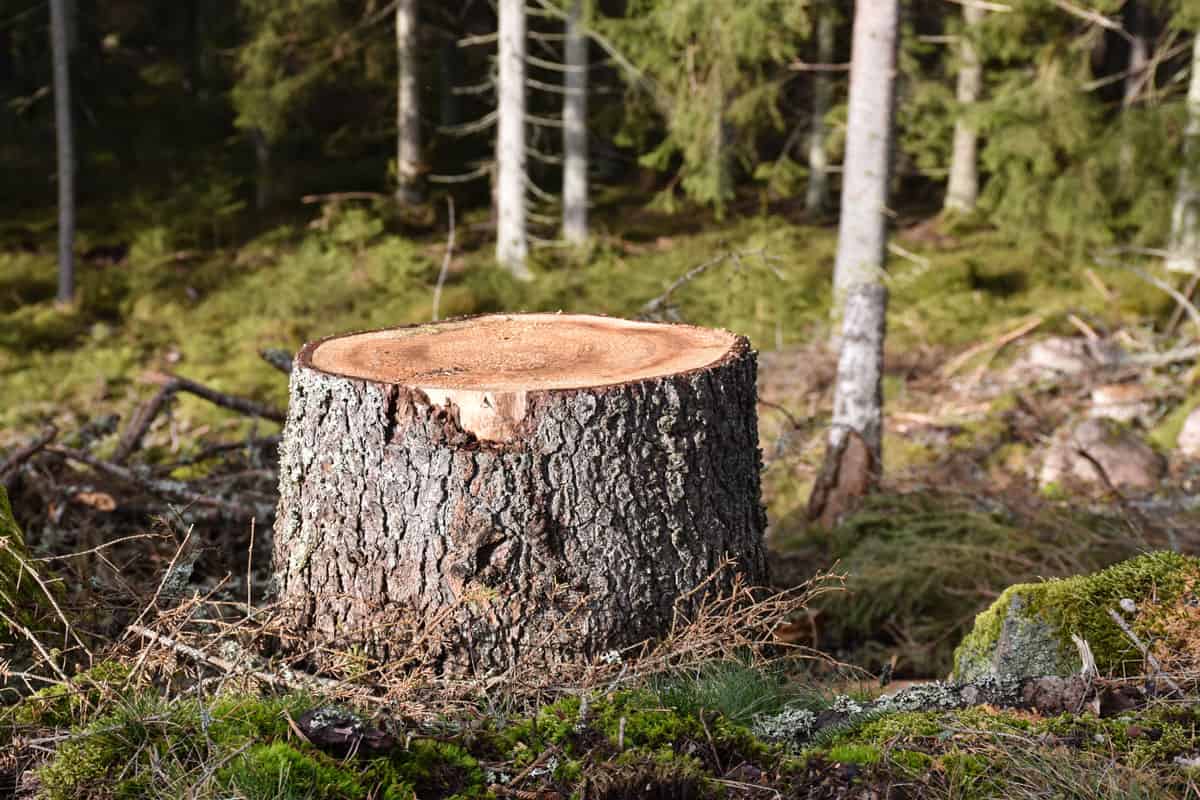
You can also try putting pots/planters on top of your stump, filling them with vibrant wildflowers or shrubs. The key here is to grow something bright enough to distract people from noticing the old tree stump.
According to Digging In The Garden, you want to apply fresh topsoil to your stump before planting anything. Not only will this help your new plants to grow, but it will also cover some of the existing stump.
In general, you want to try and decorate this space using mulch, rocks, fresh soil, and even some garden decor to give it new life. Just because the stump looks bad now doesn't mean you can't turn it into a new, vibrant spot within your property.
With that said, let's check out some of our recommended plants from earlier below:
1. Climbing Hydrangea

First, we have a climbing hydrangea suggestion for anyone with a tree stump they need to hide. Typically, this plant species will attach itself to a "host" and grow or climb around/over it.
One of the many benefits of planting a climbing hydrangea is that it doesn't need much attention. Furthermore, your hydrangea will thrive in full sun or partial shade, which applies to most gardens.
However, hydrangeas can be somewhat slow-growing, so if you're impatient, this may not be the best option.
2. Virginia Creeper
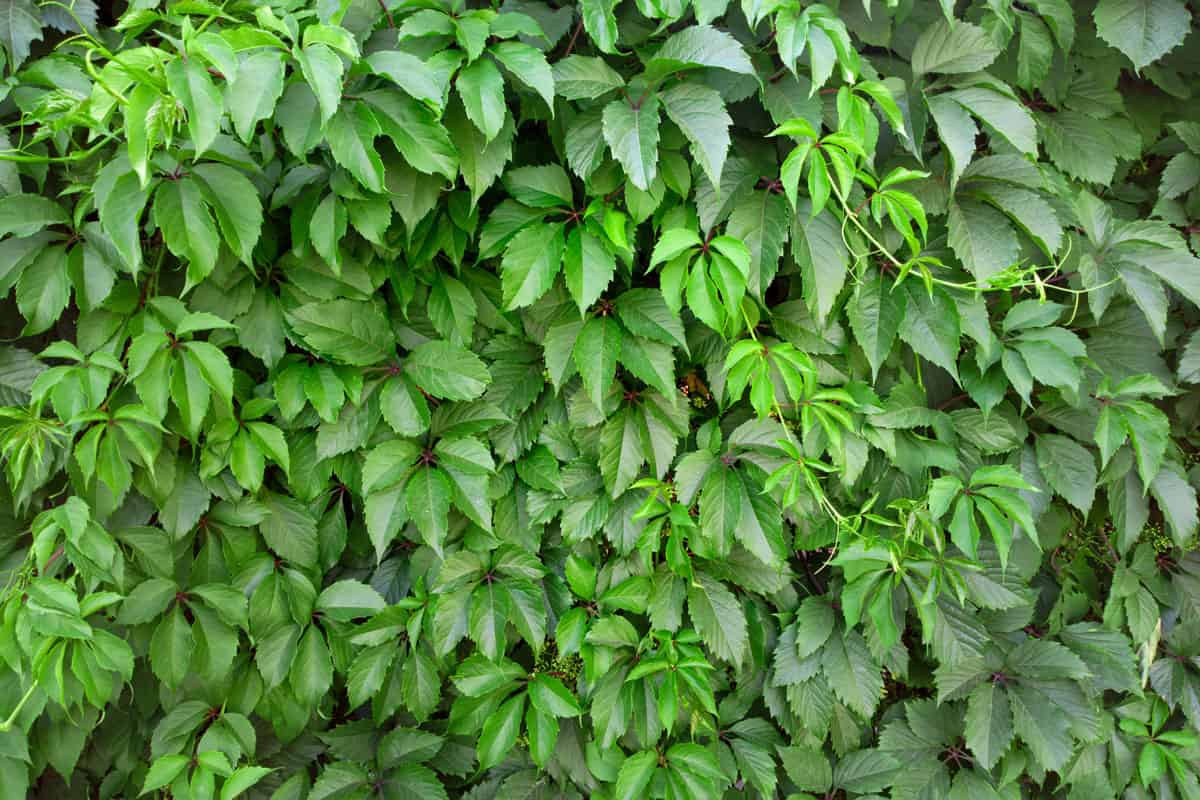
Another idea for covering a tree stump would be planting a Virginia creeper nearby. Like a climbing hydrangea, this plant will attach to a host plant or surface and climb around/over it.
This plant typically has more of an evergreen color to it and looks like a classic vine from the movies. In addition, you may want to plant a few of these around your stump, if it's large, to conceal it better.
It's also worth noting that some sensitive people may be allergic to the sap from this ivy plant, so keep that in mind while deciding.
3. Carolina Jessamine
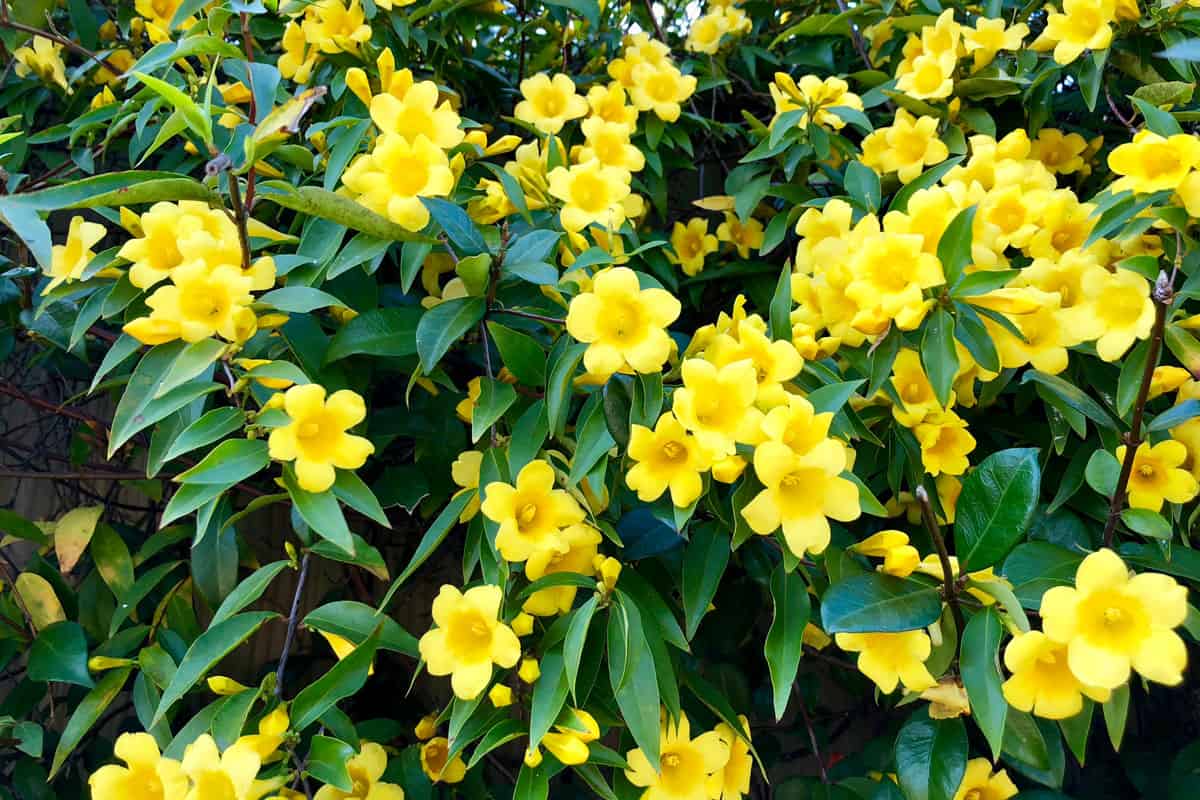
Switching to a more colorful idea, we have the Carolina jessamine. One of the benefits of using this vine to cover a tree stump is that it produces gorgeous yellow flowers.
This plant also smells very nice, so if you want to turn your garden into a tranquil space, this could be a good idea to try. Generally, as long as Carolina jessamine has adequate sunshine and water, it will sprawl and grow over/on top of whatever you attach it to.
With that said, this vine contains strychnine-like alkaloids, which can be poisonous to humans and animals. So, this may not be the best option if you have young kids or a pet that goes outside.
4. Sweet Peas

If you want to plant bright flowers around your tree stump, sweet peas are a perfect idea. Besides coming in annual and perennial varieties, you can expect sweet peas to grow roughly 4-6 feet tall.
Not only will that be tall enough to cover a tree stump, but it will also become a focal point in your yard. Furthermore, sweet peas do well in full sun and prefer moist soil, which is common near a tree stump.
This plant is also quite colorful, with varieties ranging from red, blue, lavender, pink, and brilliant white.
5. Clematis
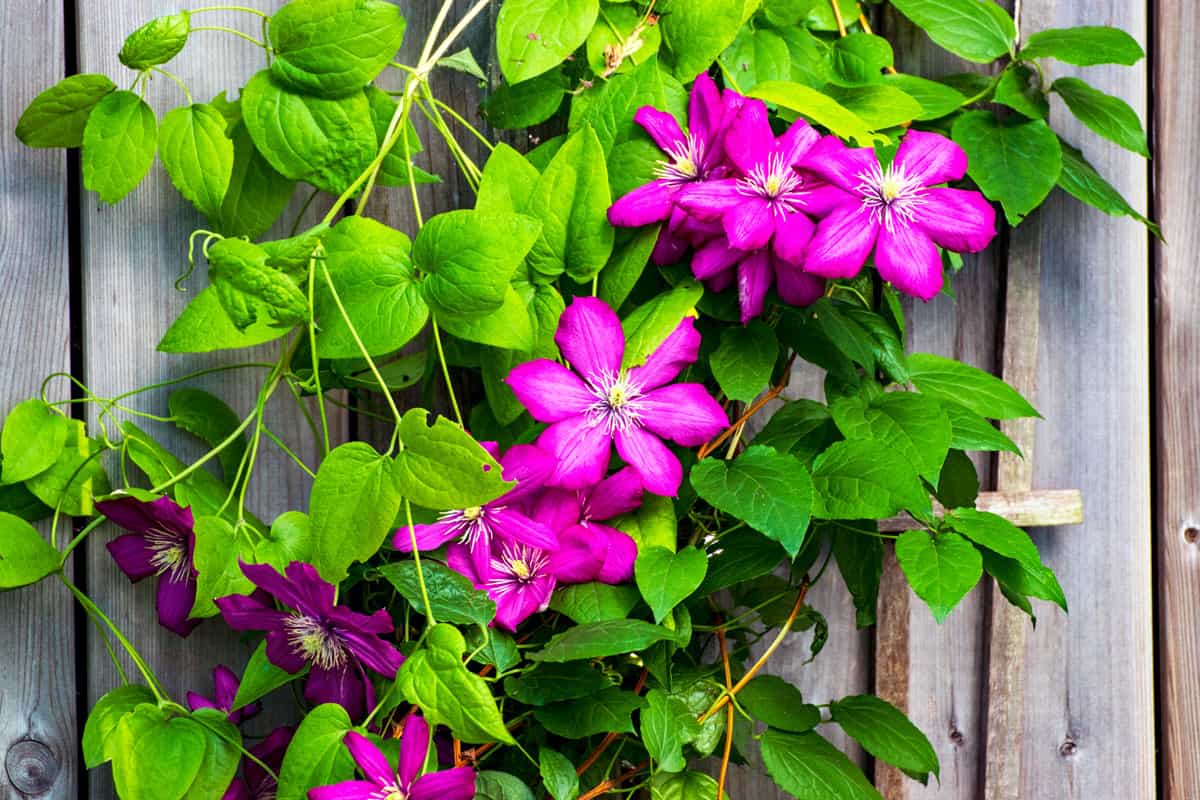
Continuing a more colorful theme, we also have clematis to recommend for covering a tree stump. Generally, clematis will climb and overcome a structure/stump quickly, so these are perfect for those in a rush.
In addition, clematis will come back each year, so you don't have to worry about replanting. Besides being one of the more popular options for gardening, clematis plants can thrive in partial sun, which makes them perfect for wooded areas.
However, the leaves on clematis can be toxic to animals and people, so be careful where you plant them.
6. Lavender
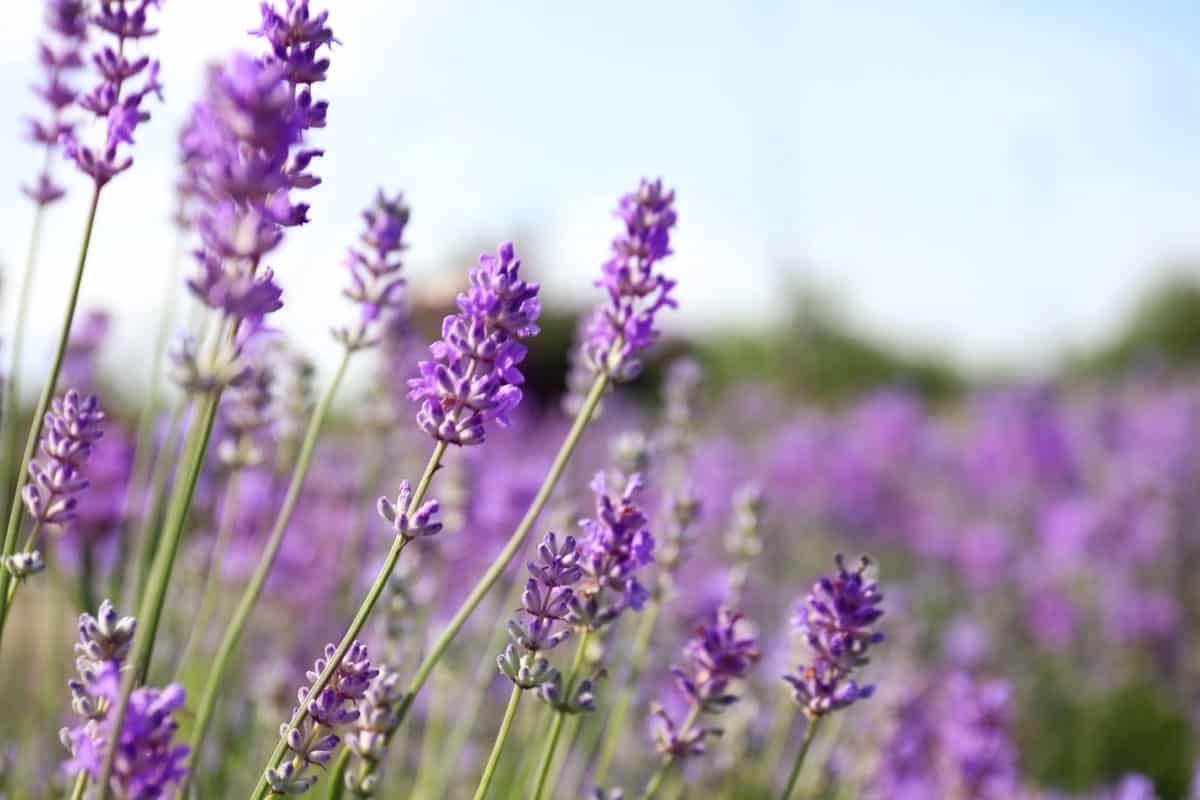
Our final idea for covering a tree stump is to plant some lavender nearby. One of the many benefits of this plant is that it has a beautiful scent.
Typically, lavender plants will live and bloom for five years before needing to be replanted, so this is a somewhat short timeline.
That said, if your lavender self-seed, you may not have to worry about a few dying off. Moreover, lavender will require full sun exposure, so if your stump is shaded, you might want to try a different option.
Can You Remove A Tree Stump From The Ground?
Yes, this is doable if you don't want to cover a tree stump but remove it entirely. With that said, getting a tree stump out of the ground can be a significant undertaking.
For example, if your stump is bigger, you will need multiple people to help. You need to dig around the entire stump and figure out how to lift it, so this is manually challenging.
According to This Old House, you'll also need to cut any roots beneath your tree stump, which can take hours to accomplish. Of course, nothing is impossible if you're determined, but there are easier ways to conceal a tree stump.
As we covered above, many plants will cover a stump rather quickly, so there's not always much reason to spend time removing one from your garden.
How Much Does It Cost To Have A Tree Stump Removed?
If you prefer to hire someone to remove your stump instead, expect to pay between $164 and $475. Of course, these estimates will vary depending on where you live, how big the stump is, and the job's difficulty.
Generally, landscapers will charge between $2 and $5 per diameter inch of your tree stump, so this can be expensive for larger ones.
According to Christianson Tree Experts, many companies will have a minimum $100 fee for tree stump removal, meaning you'll need to spend at least that much regardless.
If you have multiple stumps to remove, this can become very costly, hence why so many people choose to grow flowers or vines over their stumps instead.
In addition, there's not much reason to spend all this money removing a stump if you aren't using the land for something like a pool or guest home, so try to consider everything in the bigger picture.
Can A Tree Stump Grow Back?

As crazy as it sounds, a tree can regrow itself after being chopped down. Although this isn't going to happen fast, a tree will eventually emerge from its stump.
You have to remember that just because a tree stump isn't technically growing and changing, it still has roots below. If you don't keep your stump in check, some of your previous trees will likely begin regrowing.
Again, this isn't necessarily bad unless your tree had a disease or wasn't supposed to be there in the first place. Luckily, if your tree dies and the stump is left behind, it won't usually ever grow again.
Therefore, if you cut down a somewhat healthy tree, you might need to cut it back every few months once greenery starts popping up.
How Do You Make Sure A Tree Stump Doesn't Grow Back?
For anyone now worrying about a new tree emerging from its stump, don't panic yet. In general, you can use 100% Epsom or rock salt on your stump to kill it entirely, so this is doable.
With that said, your salt will need to be pure, so if it has other additives or ingredients, you won't kill your tree for sure. According to 72 Tree, this entire process can take up to six months, so patience is essential.
It's important to be careful with what you use to kill your stump, so the ground nearby doesn't become infertile. For example, if you dump a harsh chemical on your stump to try and kill it, you could accidentally kill every plant around it.
So, try to be mindful of that and think of this as a longer process with better results.
To Wrap Up
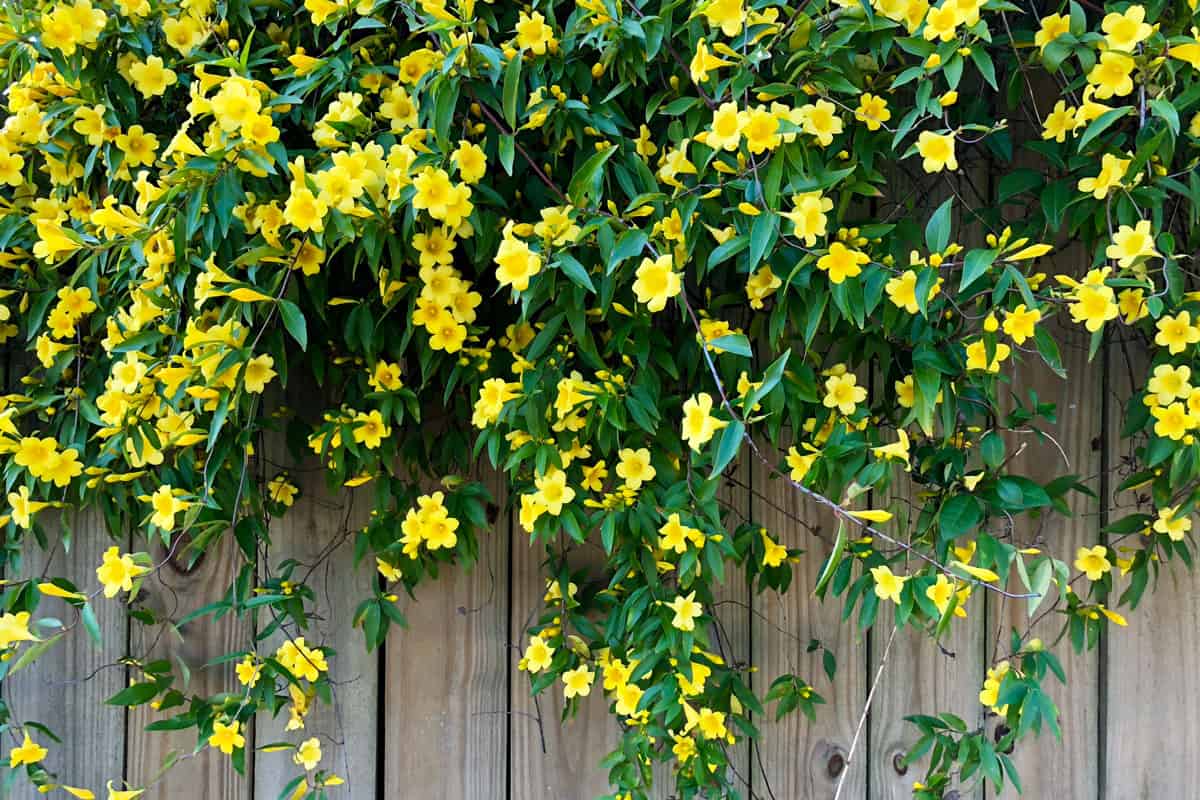
Whether you have an old tree stump or recently removed a tree from your yard, it's essential to know how to cover it. From what we found, you can use various plants, including climbing hydrangea, Virginia creeper, Carolina jessamine, sweet peas, clematis, and even lavender, to do this.
Regardless, you want to ensure your stump is entirely dead before planting anything and avoid harsh chemicals during this process so the nearby land remains fertile.
Made it here? Check out these helpful related plant posts below!
